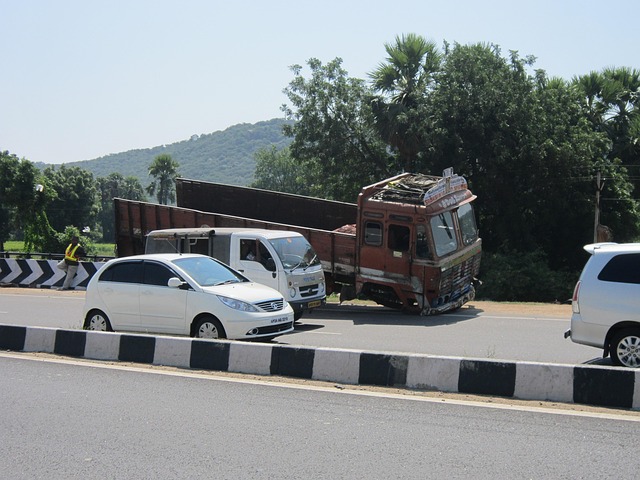Full Coverage Auto Insurance provides comprehensive protection against various risks, including accidents, theft, vandalism, and natural disasters. It goes beyond basic liability by offering collision and comprehensive coverage, ensuring vehicle repairs or replacements with minimal out-of-pocket expenses. This type of insurance includes benefits like roadside assistance, rental car coverage, and legal defense, offering peace of mind and a streamlined claims process. While costs vary based on driving history, vehicle type, location, and chosen coverage levels, understanding the fine print is crucial to making an informed decision that aligns with personal needs.
“Unraveling the complexities of full-service car insurance—a comprehensive guide. This article offers a detailed explanation of what constitutes ‘full service’ in auto coverage, demystifying key aspects like included protections and potential exclusions. We’ll explore various policy types, advantages, and implications on costs.
From mandatory requirements to comparisons with limited options, this overview ensures you’re informed when selecting the right full-coverage plan for your needs.”
Understanding Full Coverage Auto Insurance: A Comprehensive Overview

Full Coverage Auto Insurance Explained is a comprehensive protection plan designed to shield you from various financial burdens associated with car accidents or other unforeseen events. Unlike basic liability insurance that covers only third-party damages, full coverage encompasses a broader spectrum of protections. This includes collision coverage, which pays for repairs to your vehicle after an accident, and comprehensive coverage, which covers damage from incidents like theft, vandalism, or natural disasters.
Understanding Full Coverage Auto Insurance involves grasping these key components. By combining collision and comprehensive, you gain peace of mind knowing that your investment in a vehicle is secured. This type of insurance not only protects your financial well-being but also ensures you can replace or repair your car without incurring substantial out-of-pocket expenses. It’s a smart choice for drivers who value security and want to avoid unexpected financial surprises on the road.
What Does 'Full Service' Entail in Car Insurance?

When we talk about ‘full-service’ car insurance, we’re essentially referring to a comprehensive package that covers all your automotive needs under one policy. This goes beyond the standard liability coverage that protects you against financial loss in case of an accident where you’re at fault or if someone is injured. Full coverage auto insurance, also known as comprehensive and collision insurance, includes additional protections like damage from natural disasters (like storms, floods), theft, vandalism, and even accidents involving uninsured drivers.
The term ‘full service’ implies that the insurance company takes care of everything from assisting with repairs or replacements to providing roadside support and legal defense if needed. This means policyholders can enjoy peace of mind knowing they have all-around protection for their vehicles, along with access to various services that streamline any claims process and ensure a smoother experience during challenging times.
Types of Coverage Included in Full-Service Policies

Full-service car insurance policies offer comprehensive protection for vehicle owners, encompassing a wide range of coverage options designed to shield against various risks on the road. Unlike basic liability plans that typically cover medical expenses and property damage up to a specified limit, full coverage auto insurance explained as including additional safeguards. These may extend to protective features like collision coverage, which pays for repairs or replacement in case of an accident, regardless of fault. Moreover, many policies incorporate comprehensive coverage, designed to handle damages from events beyond accidents, such as theft, natural disasters, or vandalism.
Full-service policies also usually include specific add-ons tailored to individual needs. These could range from roadside assistance for quick fixes during breakdowns to rental car coverage in the event your vehicle is disabled. Some plans even offer perks like loan/leasing benefits, which can help offset financial burdens if you need to replace or repair your car after a covered incident. This suite of protections ensures that policyholders are well-prepared to handle unexpected events, providing peace of mind on the road.
Advantages of Opting for Full Coverage Auto Insurance

Opting for full-service car insurance offers several significant advantages that can protect you from substantial financial burdens and provide peace of mind on the road. Firstly, it ensures comprehensive protection against various risks such as accidents, theft, natural disasters, and damage caused by vandalism or riots. This all-encompassing coverage is especially beneficial if your vehicle is relatively new or valuable, as it can help replace or repair it without incurring substantial out-of-pocket expenses.
Additionally, full coverage auto insurance includes liability protection, which shields you from financial responsibility in the event that you cause damage to another person’s property or injuries to them. This aspect is crucial for maintaining a clean driving record and avoiding hefty lawsuits. Moreover, many full-service policies include perks like roadside assistance, rental car coverage during repairs, and emergency services, making them a one-stop solution for all your automotive needs.
Common Exclusions and Limitations to Be Aware Of

When considering full coverage auto insurance, it’s crucial to understand that no policy is without its exclusions and limitations. These are conditions or circumstances under which your insurance may not cover you fully. Common exclusions include driving while under the influence of alcohol or drugs, willful damage to your vehicle, or natural disasters like floods or earthquakes (which often require separate coverage). Additionally, certain high-risk activities or vehicles, such as racing or classic cars, might have restricted coverage options.
Some policies may also limit the amount you can claim for damages, especially in cases of property damage or third-party liability. It’s essential to read the fine print carefully and ensure that your policy covers all areas of concern, aligning with your specific needs and circumstances. Understanding these exclusions is a vital step in securing comprehensive full coverage auto insurance that provides peace of mind on the road.
How Full-Service Insurance Impacts Your Premium Costs

Full-service car insurance, often referred to as full coverage auto insurance explained, is designed to protect drivers from a wide range of financial risks associated with vehicle ownership. This type of policy typically includes liability coverage, which pays for damages caused to others in an accident, as well as comprehensive and collision coverage, which protect against more specific perils like theft, vandalism, and natural disasters. The impact on premium costs can vary widely based on several factors.
One key influencer is your driving history and behavior. Safe driving habits and a clean record generally lead to lower premiums. Additionally, the type of vehicle you own plays a role; high-value cars or those with advanced safety features might command higher rates due to their potential repair costs. Other considerations include location—factors like crime rates and weather conditions can affect insurance costs—and the level of coverage you choose, as comprehensive and collision coverage tends to be more expensive than liability-only options.
When is Full Coverage Auto Insurance Mandatory?

Full-service car insurance, also known as full coverage auto insurance, is a comprehensive protection plan for vehicle owners. It combines liability coverage, which protects against claims made by others for damages or injuries caused by your driving, with collision and comprehensive insurance. The latter covers repairs or replacements due to accidents (collision) and non-accidental events like theft, vandalism, or natural disasters (comprehensive).
In many jurisdictions, full coverage auto insurance is mandatory for all vehicle owners. This requirement typically kicks in when you register your car, obtain a driver’s license, or renew your existing insurance policy. The specific regulations vary by region, so it’s crucial to check with your local Department of Motor Vehicles (DMV) or insurance provider to understand the exact mandates. Ensuring compliance is essential not only to avoid legal penalties but also to safeguard yourself and others on the road.
Comparison with Limited Coverage Options

When considering car insurance options, understanding the difference between full-service and limited coverage is key. Full coverage auto insurance, as the name suggests, provides comprehensive protection for your vehicle and driver in a wide range of scenarios. This includes liability coverage for damages caused to others, as well as coverage for your own vehicle in case of theft, vandalism, or accidents—even if they’re your fault.
In contrast, limited coverage options typically offer lesser protection, focusing mainly on high-risk situations like liability for damage or injuries inflicted on others. These policies often exclude other potential costs associated with car ownership, leaving the policyholder responsible for significant out-of-pocket expenses in the event of an accident or other insured events. When deciding between full coverage and limited options, it’s crucial to weigh your personal risk tolerance, budget, and the financial impact of potential unforeseen events.
Choosing the Right Full-Service Plan: Tips and Considerations

Choosing the right full-service car insurance plan is crucial for ensuring comprehensive protection and peace of mind on the road. Start by evaluating your specific needs, driving habits, and budget. Full coverage auto insurance, as the name suggests, covers a wide range of risks, including liability, collision, comprehensive, and sometimes even optional perks like roadside assistance or rental car coverage.
Consider factors such as your vehicle’s age and condition, your driving history, and the areas you typically drive in. If you’re a new driver or have a history of accidents or violations, look for plans with higher deductibles, which can lower premiums but require more out-of-pocket expenses in case of claims. Conversely, safe drivers with clean records might find more affordable options with lower deductibles. Research different insurance providers and their offerings to find the best fit, comparing policies side by side based on coverage limits, exclusions, and additional benefits.
